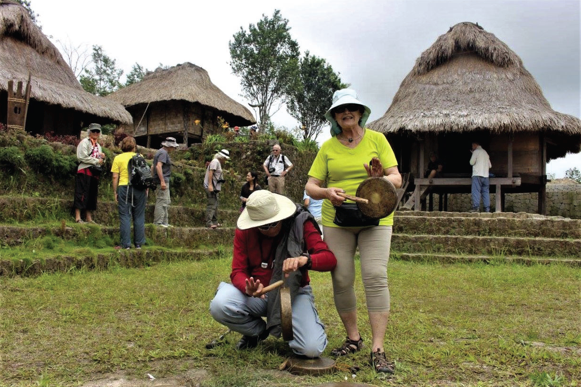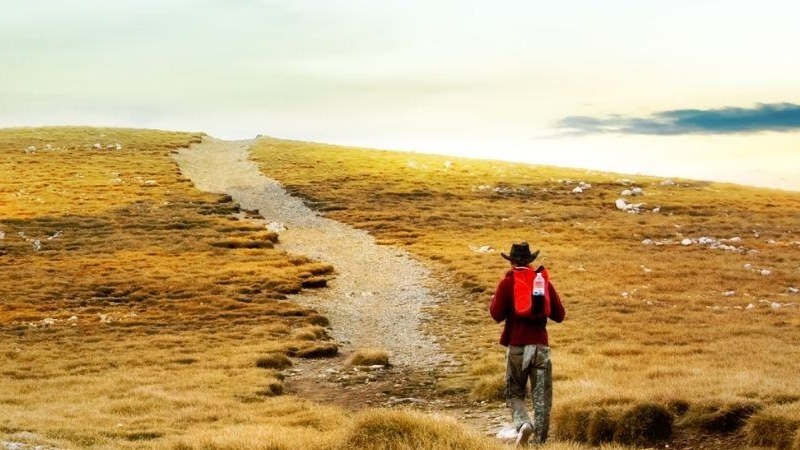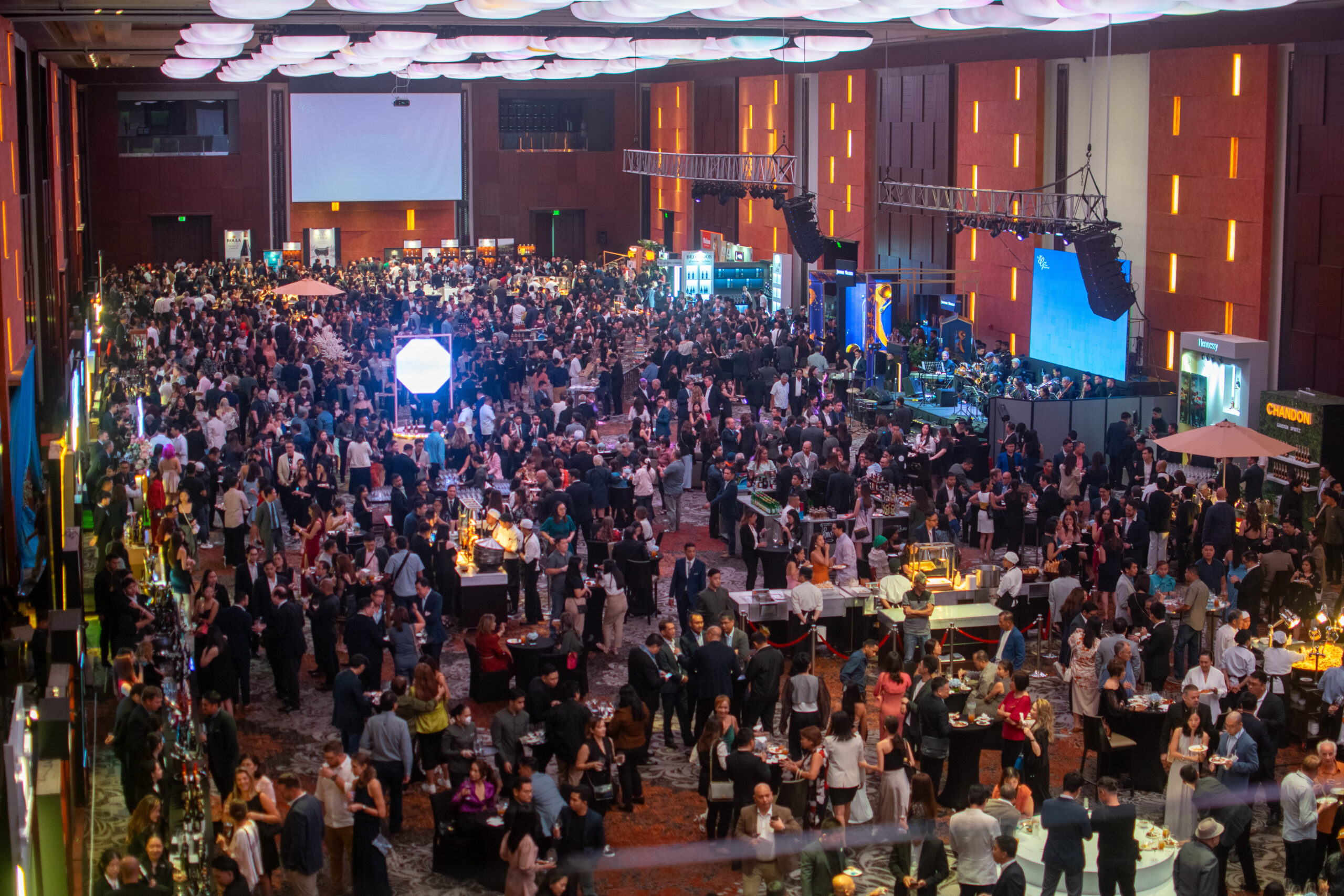Perched in the highlands of the Gran Cordillera mountain ranges is Kalinga province, an emerging tourist getaway with its uncanny mixture of ancient traditions and adventure.
This once-obscure province made a splash, quite literally, in the 1990s when white water rafting was introduced in its provincial capital of Tabuk, grabbing the attention of both foreign and local adrenaline junkies.
The first of its kind in the country, it is a must-experience, succumbing to the mercy of the mighty Chico River, riding its Class III rapids while having the backdrop of stunning scenery. And while there are new water rafting sites that have sprouted over the years, the first remains unequalled because of its rugged allure, indigenous culture and a myriad of interesting stuff in between.
Depending on one’s preference, the adventure can run from the basic few hours to a three-day extreme ride along the 175-kilometer stretch regarded by the Kalinga indigenous peoples who live on its banks as the “river of life.”
Cultural showcase
After the wild ride which ends at the Dalimuno Tourism Park, you can explore the rest of the province with Tabuk City as the hub and point of origin. Swing by the Provincial Capitol Complex, a government facility which has been luring locals because of its commanding view of the valley, landscaped park peppered with replicas of ethnic houses and a museum that gives a glimpse of the local way of life.
You can chase the waterfalls of Banga-Banga, Matambong and Panpanay, which are known for their rejuvenating waters, or travel back in time in Naneng, a heritage village whose houses were built using rare hardwood. Another soothing viewpoint is Mt. Talama Provincial Tourism Park, which also offers inexpensive recreational activities.
Just like the other Cordillera provinces, Kalinga takes pride in its age-old ethnic handweaving tradition. Mabilong Weavers Village in Lubuagan is the center of such art in the province where almost all households are engaged in backstrap weaving, thus earning them the title “Weaving Capital of Kainga.”

Awichon Cultural Village is another must-visit showcase for exquisite weaving and all else distinctly Kalinga. Owned and developed Alonzo Saclag, who was hailed as a Gawad Manlilikha ng Bayan (National Living Treasure) by the National Commission for Culture and the Arts, it was designed as a miniature tribal hamlet where guests can immerse in cultural shows, bonfire dinner, camping, and interacting with Saclag.
While in Lubuagan, take time to admire the amazing “sea of clouds” formation, a soothing roadside scenario while on the way to Aguinaldo Park where former president Emilio Aguinaldo relocated the capital of the fledging Philippine Republic for 72 days during the Fil-American War in 1900.
Pop culture phenom
Perhaps the most top-of-mind destination these days is Buscalan Village in Tinglayan, where pop culture phenomenon – the nonagenarian Apo Whang Od resides. Apo Whang Od is considered the last original artist of the centuries-old batok skin art tradition. A recipient of the rare Dangal Ng Haraya award by the NCCA for her dedication to the headhunter art for more than six decades, she became a byword after getting the spotlight in National Geographic’s Tattoo Hunter documentary of noted American anthropologist Lars Krutak.


Soon enough, major media outfits and curious tourists trooped to the community to get a rendition of her body art, which has become a status symbol to many.
However, due to the deluge of guests in recent years, the provincial government has stepped in to help ensure the sustainability of the area and the authenticity of the total experience.
Festival of Peace
If getting permanent skin art isn’t your style, you can marvel at the amphitheater shaped Dananao and Tulgao Rice Terraces carved on the mountain slopes or trek to the 50-meter Palang-Ah Falls cutting through lush vegetation.
But what takes the cake is the bodong, a time-honored custom of settling conflicts among Cordillera peoples by instituting a series of rituals in accordance to tribal traditions. The peace pact is often portrayed in ethnic dances performed by locals to welcome tourists.
To rekindle this peacekeeping tradition, Kalinga has instituted the Bodong Festival by virtue of Provincial Ordinance No. 2016-029 to celebrate its foundation day in mid-February, when it was split with its province of Apayao.


According to Governor Jocel Baac, the festival showcases their rich culture as a way of expressing thanksgiving to forefathers who started the bodong peace institution which is instrumental in resolving tribal conflicts and restoring harmony.
He said the province intends to conduct an annual Bodong Congress to strengthen bilateral peace pacts between sub-tribes and further promote goodwill to ensure economic progress.
The weeklong festivity includes a grand street dancing tilt – a showcase of the colors and diversity of the various municipal festivals. There will also be the performance of the laga and lonok, a bodong practice where a visitor is welcomed to settle a dispute or enjoy a celebration.
Fringe activities include sporting events, treasures fair, agricultural exhibit, pageants, grand civic parade, a fashion show of elegant ethnic woven fabrics in contemporary wear, and a tattoo hub which offers hand-tapped tattoo under a new generation of artists.
But long after the smoke of the merry-making has settled, the spirit of the bodong will resonate as Kalinga welcomes visitors who will arrive as strangers, and leave as members of the family.
Getting There:
Take a bus or plane going to Tuguegarao City, Cagayan. A plane ride takes 1 hour and 10 minutes, while a bus would take more than half the day.
From there, take a UV Express or rented car bound for Tabuk City, the capital of Kalinga, which will take more than an hour’s drive.
A suggested place to stay is the three-star M Hotel in Tabuk, an accredited establishment by the Department of Tourism which has a full-service restaurant and a pool overlooking the city.
By BERNARD L SUPETRAN


Awichon Cultural Village is another must-visit showcase for exquisite weaving and all else distinctly Kalinga. Owned and developed Alonzo Saclag, who was hailed as a Gawad Manlilikha ng Bayan (National Living Treasure) by the National Commission for Culture and the Arts, it was designed as a miniature tribal hamlet where guests can immerse in cultural shows, bonfire dinner, camping, and interacting with Saclag.
While in Lubuagan, take time to admire the amazing “sea of clouds” formation, a soothing roadside scenario while on the way to Aguinaldo Park where former president Emilio Aguinaldo relocated the capital of the fledging Philippine Republic for 72 days during the Fil-American War in 1900.
Pop culture phenom
Perhaps the most top-of-mind destination these days is Buscalan Village in Tinglayan, where pop culture phenomenon – the nonagenarian Apo Whang Od resides. Apo Whang Od is considered the last original artist of the centuries-old batok skin art tradition. A recipient of the rare Dangal Ng Haraya award by the NCCA for her dedication to the headhunter art for more than six decades, she became a byword after getting the spotlight in National Geographic’s Tattoo Hunter documentary of noted American anthropologist Lars Krutak.


Soon enough, major media outfits and curious tourists trooped to the community to get a rendition of her body art, which has become a status symbol to many.
However, due to the deluge of guests in recent years, the provincial government has stepped in to help ensure the sustainability of the area and the authenticity of the total experience.
Festival of Peace
If getting permanent skin art isn’t your style, you can marvel at the amphitheater shaped Dananao and Tulgao Rice Terraces carved on the mountain slopes or trek to the 50-meter Palang-Ah Falls cutting through lush vegetation.
But what takes the cake is the bodong, a time-honored custom of settling conflicts among Cordillera peoples by instituting a series of rituals in accordance to tribal traditions. The peace pact is often portrayed in ethnic dances performed by locals to welcome tourists.
To rekindle this peacekeeping tradition, Kalinga has instituted the Bodong Festival by virtue of Provincial Ordinance No. 2016-029 to celebrate its foundation day in mid-February, when it was split with its province of Apayao.


According to Governor Jocel Baac, the festival showcases their rich culture as a way of expressing thanksgiving to forefathers who started the bodong peace institution which is instrumental in resolving tribal conflicts and restoring harmony.
He said the province intends to conduct an annual Bodong Congress to strengthen bilateral peace pacts between sub-tribes and further promote goodwill to ensure economic progress.
The weeklong festivity includes a grand street dancing tilt – a showcase of the colors and diversity of the various municipal festivals. There will also be the performance of the laga and lonok, a bodong practice where a visitor is welcomed to settle a dispute or enjoy a celebration.
Fringe activities include sporting events, treasures fair, agricultural exhibit, pageants, grand civic parade, a fashion show of elegant ethnic woven fabrics in contemporary wear, and a tattoo hub which offers hand-tapped tattoo under a new generation of artists.
But long after the smoke of the merry-making has settled, the spirit of the bodong will resonate as Kalinga welcomes visitors who will arrive as strangers, and leave as members of the family.
Getting There:
Take a bus or plane going to Tuguegarao City, Cagayan. A plane ride takes 1 hour and 10 minutes, while a bus would take more than half the day.
From there, take a UV Express or rented car bound for Tabuk City, the capital of Kalinga, which will take more than an hour’s drive.
A suggested place to stay is the three-star M Hotel in Tabuk, an accredited establishment by the Department of Tourism which has a full-service restaurant and a pool overlooking the city.
By BERNARD L SUPETRAN









